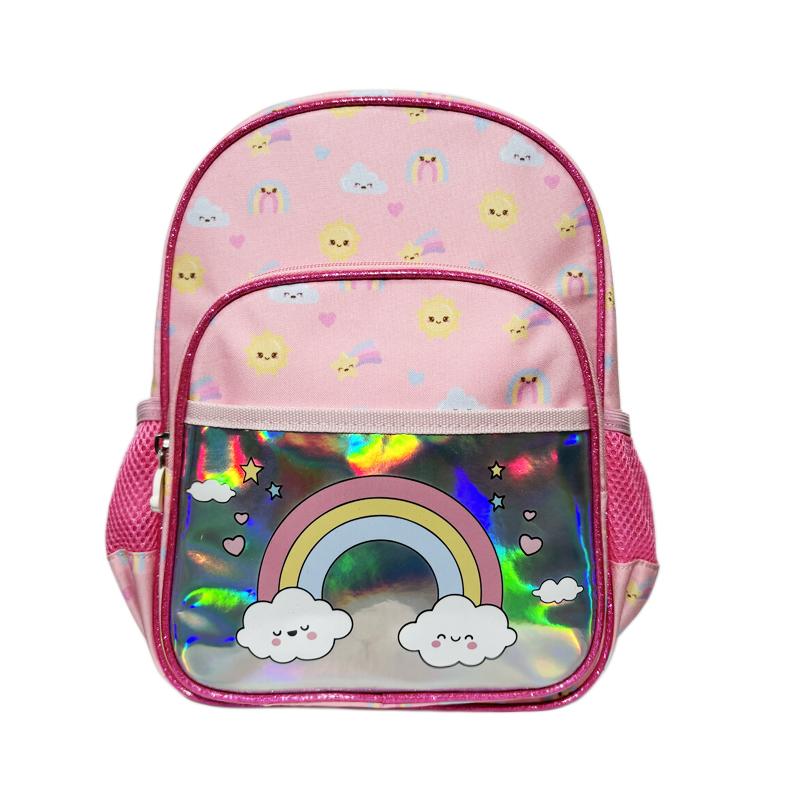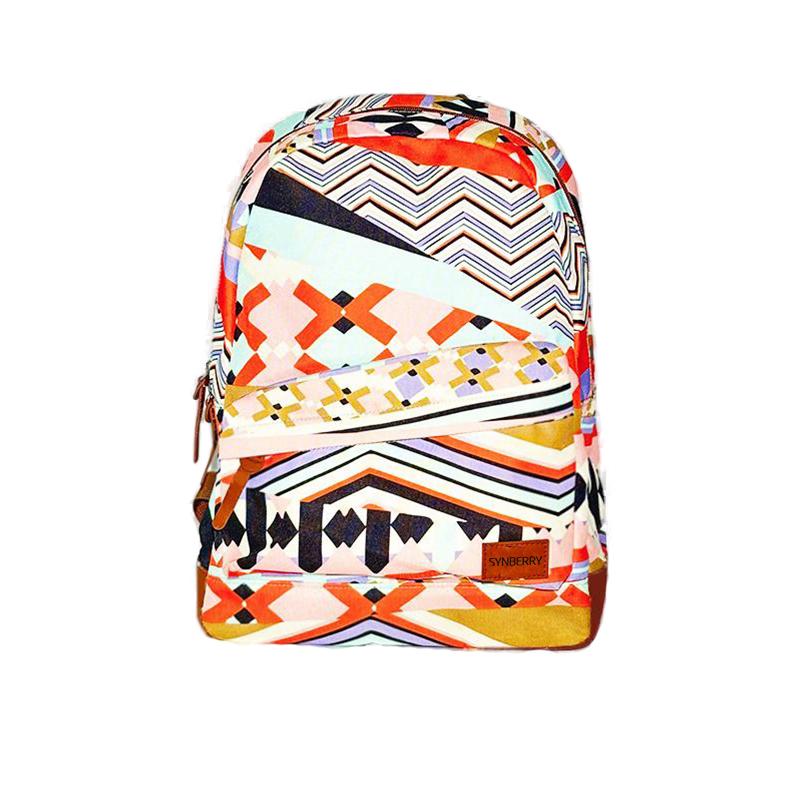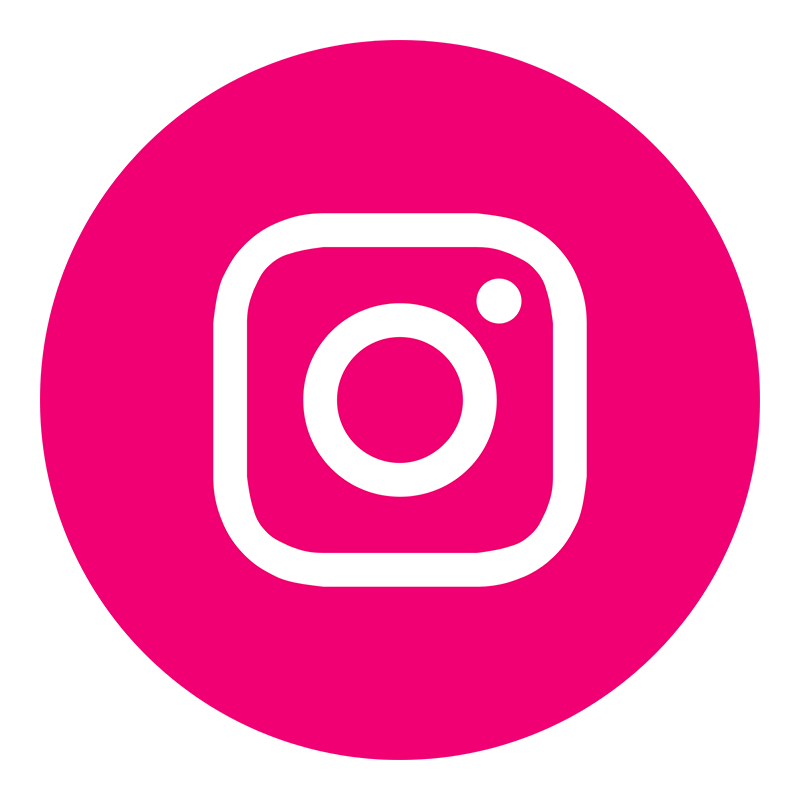years of experience
National cooperation
Technical Team
Our professional product customization service transforms your idea into reality, providing a seamless experience from the concept to product display on the retail shelf


With factories in China and Cambodia, you have the flexibility to select the production site that offers the most advantageous tariff benefits based on your specific situation.


What has made Synberry the choice of two generations? With clearly defined quality principles, well-managed documentation and records, and most importantly, in-depth process analysis and inspection, we are able to ensure consistent high quality.


Oxford fabric, also known as Oxford weave, is a tightly structured and highly versatile woven textile that originated in England around 1900. It first earned its name through its use in dress shirts at the University of Oxford. Its most distinctive feature is the unique “2×2 basket weave” in which two warp yarns interlace with two weft yarns to create a small, check-like texture that yields a sturdy cloth. This construction gives Oxford fabric its hallmark combination of durability, breathability, wrinkle resistance, and a relatively soft hand. 1. Definitions: Oxford Fabric vs. Oxford Spinning • Oxford fabric is the broader term that covers any cloth woven with this specific basket-weave structure. • Oxford spinning (or “Oxford shirting”) normally refers to the lighter, softer versions of Oxford cloth intended for shirts, usually made of cotton or cotton blends and valued for comfort and appearance. In short: all Oxford spinning is Oxford fabric, but not every Oxford fabric qualifies as Oxford spinning. A heavy, coated polyester Oxford cloth used for luggage, for example, would never be called “Oxford spinning.” 2. How to Choose and Identify Oxford Fabric for relevant product development 2.1. Match the fabric to its intended use • For shirts: pick cotton or high-count cotton-blend Oxford; it should feel soft and supple. • For bags or outdoor gear: choose coated polyester/nylon Oxford and check the denier (D) and coating type. Denier indicates yarn thickness. Common values are 300 D, 600 D, 900 D, 1 000 D, 1 200 D, 1 680 D, etc. The higher the denier, the thicker the yarn, and the heavier, tougher, and more abrasion-resistant the fabric. A 1 680 D bag, for example, will be extremely rugged but also noticeably heavier. Coating determines water resistance, scuff resistance, and other protective properties. 2.2. Fabric Hand Feeling: good Oxford should be uniform in texture, have a smooth, even coating, and be free of unpleasant odors. 2.3. Inspect the weave: the classic tiny basket-weave check is the signature mark; even on coated cloth the pattern should still be visible. 3. Key Characteristics of Oxford Fabric 3.1 Durability & strength: the tight basket-weave makes the cloth extremely tough and abrasion-resistant, so it tears only under considerable stress. 3.2 Breathability: compared with many fully synthetic coated textiles, natural or blended Oxford allows noticeably more air and moisture to pass through. 3.3 Wrinkle resistance: the slightly heavier weight and textured surface help it resist creasing better than plain-weave cotton. 3.4 Soft comfort: although inherently sturdy, finished Oxford—especially cotton versions—can be made surprisingly soft, making it comfortable next to the skin. 3.5 Easy care: the fabric is generally machine-washable and quick to dry, requiring little special maintenance. 4. Here’s how Oxford fabrics are categorized per its fiber composition and performance: 4.1 100 % Cotton Oxford Characteristics: the classic version-most breathable, most comfortable against skin. Uses: premium shirts, workwear, casual trousers. 4.2 Polyester Oxford / Nylon Oxford Characteristics: extremely high tenacity, low weight, quick-drying, abrasion- and mildew-resistant; breathability is lower. Uses: luggage, tents, outdoor gear, vehicle covers, storage bags. 4.3 Blended Oxford (e.g., polyester-cotton) Characteristics: merges cotton comfort with polyester durability, wrinkle resistance and easy care. Uses: business-casual shirts, uniforms. 4.4 Check-plaid Oxford (two-color warp) Characteristics: two different color warp yarns woven simultaneously to create a bold two-tone check; highly decorative. Uses: fashion shirts, oxford fabric backpacks, upholstery. 4.5 Stretch Oxford Characteristics: spandex or other elastomeric yarns are added, giving the fabric controlled stretch and recovery. Uses: active outdoor garments, sport backpacks that need freedom of movement. 4.6 Coated / Waterproof Oxford Characteristics: base cloth is coated or laminated with PVC, PU, etc., imparting waterproof, soil-repellent or even flame-retardant performance. Uses: primary shell material for suitcases, trolley bags, outdoor packs, awnings and tents. Because Oxford fabric offers so many benefits, Oxford fabric shows up everywhere in daily life. Its single biggest and most emblematic market, however, is luggage and bags: almost every suitcase, trolley case, backpack, duffel and laptop sleeve relies on coated Oxford cloth of one grade or another. In this sector the fabric's strengths are displayed in two main ways: 5. Functional Coatings A coating does far more than add color - it gives the base cloth an entirely new set of properties. 1) PVC coating • Characteristics: the oldest and most economical option; film is relatively thick and stiff, offering good water resistance. • Hand feel: distinctly “plastic,” and it can turn rigid in cold weather. • Uses: early-generation suitcases, low-cost travel bags, and tool totes; now being superseded by more advanced finishes. 2) PU Coating Overview: today’s dominant finish. It is applied two ways—dry lamination (a PU film is coated directly onto the base cloth) or wet lamination (a pre-cast PU film is bonded to the fabric). Advantages: softer hand than PVC, higher abrasion and tear resistance, reliable water-proofness, stays supple in cold weather, and is more environmentally friendly. Uses: PU-coated Oxford is the go-to shell fabric for most modern mid- to high-end suitcases, daypacks, children’s school bags and laptop sleeves. 3) Waterproof yet breathable coatings Characteristics: high-tech films such as TPU. The membrane blocks liquid water from the outside while allowing perspiration vapor inside the bag to escape, keeping the interior dry and comfortable. Uses: premium outdoor packs - cycling bags, alpine backpacks - where both rain protection and ventilation are critical. 4) Other specialty finishes UV-blocking coating: shields fabric from ultraviolet degradation; used on awnings and outdoor packs. Flame-retardant coating: meets strict safety specs for industrial or military bags. Vintage / scratch-print coating: embossed or printed to create a worn, textured look that hides scuffs; popular on fashion-forward backpacks. 6. Specification Key - Denier (D) The denier count governs the fabric's physical character and is the first figure to check when you buy. 1) Low denier – 190D, 210D • Characteristics: feather-light, thin and supple. • Uses: fold-up shopping trolleys, bag linings--anywhere low weight matters. 2) Medium denier – 300D, 420D, 600D • Characteristics: the sweet spot for bags; firm enough to hold shape, tough enough for daily abuse, yet still reasonably light. • Uses: daypacks, travel duffels, messenger bags, tool bags. 600 D Oxford is the industry’s workhorse. 3) High denier – 900D, 1 000D, 1200 D, 1680D and up • Characteristics: visibly rugged, extremely abrasion- and tear-resistant, but noticeably heavier. • Uses: heavy-duty professional cases--business backpacks, military kit bags, gun sleeves, technician totes, camera bags, bulk cargo sacks. 1680D Oxford fabric has become shorthand for “bomb-proof”; premium brands such as TUMI build most of their line from it. 7. Market Trends & Innovation • Eco-shift: Oxford cloth woven from recycled polyester (RPET) and finished with water-based PU or bio-solvent coatings is rapidly replacing conventional oil-based versions. • Lightweighting: higher-tenacity yarns and denser weave architectures let low-denier fabrics deliver the tear strength once reserved for 1 000 D+ cloths, shaving precious grams from every pack. • Fashion crossover: checks, jacquards, linen-look slubs, space-dyes and washes strip the fabric of its “work-wear” image and move it into street-wear and premium luggage. • Smart integration: Oxford is becoming a substrate—heat-bonded with NFC tags for luggage tracking, or laminated to flexible solar films that turn backpacks into off-grid chargers. In the world of bags, Oxford fabric is no longer “just fabric.” By fine-tuning four key variables--base yarn (polyester or nylon), yarn thickness, weave density, and coating technology, manufacturers treat the fabrics like a recipe, tailoring the exact performance a given bag needs. This unmatched versatility and cost-effectiveness have locked Oxford into every segment, from daily commuters to expedition-grade gear. Get a complete guide from Synberry. Author
View MoreI.Overview of Polyester Fabric Polyester Fabric is a type of synthetic fiber made from chemicals, with its main component being Polyethylene Terephthalate (PET). It is produced through a melt-spinning process using petrochemical raw materials. Due to its tightly packed and symmetrical molecular structure, this fabric exhibits strong wrinkle resistance, excellent shape retention, and high durability and heat resistance. As a result, it is widely used in the manufacturing of products such as outerwear, luggage, tents, and more. From Petroleum to Polyester Filament: The Production Process is as Follows II. Core Performance Advantages of Polyester Fabric 1. Excellent Physical Strength The strength of polyester fibers is outstanding: the strength of short fibers ranges from 2.6 to 5.7 cN/dtex, while high-strength fibers can reach 5.6 to 8.0 cN/dtex. Its impact strength is twice that of viscose fibers, 2.5 times that of cotton, and 3 times that of wool. Its strength is second only to nylon. Due to its low moisture absorption, the strength in a wet state is almost the same as that in a dry state. This characteristic allows polyester to maintain better mechanical properties than nylon in humid environments. 2. Good Elasticity Polyester's elasticity is similar to that of wool. When stretched by 5% to 6%, it can almost fully recover. Its elastic modulus ranges from 22 to 141 cN/dtex, which is better than all natural cellulose fibers (such as cotton, linen, and viscose) and some protein fibers (like silk). However, it is still far behind specialized elastic fibers (such as spandex) and its competitor nylon. This is because polyester’s molecular backbone contains rigid benzene rings, similar to inserting a hardwood plank into a chain, which limits the free movement of the molecular chain. Although the intermolecular forces are strong, the chain segments themselves are less flexible, resulting in inferior elastic recovery compared to nylon. As a result, polyester is ideal for products that require shape retention, wrinkle resistance, high strength, and dimensional stability, particularly suitable for luggage products. Elasticity Ranking (from Best to Worst): Spandex > Nylon > Polyester ≈ Wool > Acrylic > Cotton > Silk > Viscose > Linen 3.Excellent Wrinkle Resistance Polyester’s wrinkle resistance surpasses all other fibers, making fabrics less prone to creasing and providing excellent dimensional stability. This characteristic allows polyester fabrics to maintain a crisp appearance without the need for frequent ironing. Wrinkle Resistance Ranking (from Best to Worst): Polyester > Nylon > Wool > Acrylic > Spandex (Lycra) > Silk > Cotton > Viscose > Linen 4.Excellent Abrasion Resistance and Lightfastness Polyester's abrasion resistance is second only to nylon and is superior to other natural and synthetic fibers. In terms of lightfastness, polyester performs just below acrylic, offering much better sun resistance than natural fiber fabrics. This makes it an ideal material for outdoor products. 5.Good Chemical Stability Polyester exhibits excellent resistance to various chemicals, including bleaches, oxidizers, hydrocarbons, ketones, petroleum products, and inorganic acids. It is also resistant to dilute alkalis, mold, and insect damage. Among synthetic fibers, polyester has the best heat resistance and is highly thermoplastic, making it suitable for all high-temperature printing processes, such as heat transfer printing and laser printing. III. Main Disadvantages of Polyester Fabric 1.Poor Moisture Absorption and Breathability Polyester has a low moisture regain rate of only 0.4%, resulting in poor moisture absorption. This leads to a noticeable feeling of stuffiness when worn in summer and causes sweat to accumulate, impacting comfort. Therefore, it is not ideal for close-fitting clothing. 2.Tendency to Generate Static Electricity As polyester does not absorb moisture, it is highly prone to static electricity in dry environments due to friction, causing clothes to cling to the body and attract dust. 3. Less Softness Compared to Natural Fibers The fabric feels relatively stiff, especially with regular polyester filaments. It has a "rigid, slippery" synthetic fiber feel and is not as soft or skin-friendly as natural fibers. IV. Main Types and Applications 1. Classification by Fiber Form and Yarn Structure Fabric Type Characteristics Description Main Uses Polyester Filament Fabric Woven with continuous filaments, smooth surface, high strength, and strong gloss. Lining, down jacket anti-fiber fabric, shirts, trench coats, sportswear, flags. Polyester Staple Fiber Fabric Mimics cotton style by cutting long filaments into short fibers similar to cotton, spun and woven. Softer feel than filament fabric, with a plush texture, but prone to pilling. Shirts, bedding, casual pants, blankets, cotton-like coats. Polyester Low Elastic Filament Fabric Filaments processed through false twisting to create a fluffy and elastic texture. Soft, with wool-like elasticity, good warmth retention. Sportswear, jackets, sofa fabric, knitted wool sweaters (wool-look). Polyester Air-Twisted Filament Fabric Filaments twisted by high-pressure air to form irregular knots and loops, resulting in a “peach skin” effect similar to short fibers. Soft gloss, enhanced moisture-wicking properties. Outdoor wear, sports jackets, high-end suit linings. 2. Classification by Fabric Weave and Post-finishing Processes (Most Common Product Names) Fabric Type Characteristics Description Main Uses Taffeta The most basic and commonly used polyester fabric. Plain weave, high density, smooth and crisp feel, with a “rustling” sound. Can undergo various post-finishing treatments (calendering, coating, etc.). Universal base fabric: Outer shell and lining for down jackets/cotton jackets, tents, umbrellas, shirts, trench coats. Spring Taffeta A variation of taffeta with a semi-matte finish. Uses semi-dull filaments, smooth and delicate fabric surface, soft feel, and affordable price. Jackets, down jackets, children's clothing, luggage, outdoor products. Oxford Cloth Uses “one thick, one thin” yarns interwoven to form a unique grainy texture. Strong, wear-resistant, firm, and rugged in style. The king of luggage: Backpacks, rolling luggage. Also used for footwear materials, tents, and outdoor furniture. Peach Skin/Deerskin Velvet Processed by brushing, creating dense and soft short fibers on the surface with a peach-skin or deerskin-like texture. Jackets, sofa covers, fashionable women’s clothing, car interiors, high-end cleaning cloths. Chiffon Uses high-twist yarn, lightweight, transparent fabric with a soft and elastic feel, good breathability, and drape. "Georgette" is a variant that is more wrinkled and voluminous. Summer women’s clothing, dresses, shirts, scarves, curtains. Imitation Silk Fabric Mimics the luster and soft drape of real silk through special cross-section filaments and alkali reduction treatments. Examples include "Georgette" and "Shantung." Silk alternative for shirts, skirts, scarves, reducing costs and easier to care for. Fleece Knitted fabric processed with combing, carding, shearing, and other techniques to form fluffy, compact little fleece balls, offering excellent warmth retention. Fall and winter warm clothing, blankets, loungewear, pet mats. Coral Fleece Denser fibers with finer and longer fleece that creates a coral-like texture, extremely soft and warm, but prone to static and shedding. Pajamas, loungewear, blankets, plush toys. Memory Fabric Contains "shape memory" additives or uses PTT (a bio-based elastic polyester) fibers. The fabric has wrinkle resistance and can be ironed at low temperatures to recover wrinkles. Suit pants, pleated women’s fashion, luggage, car seat covers. 3. Classification by Special Functional Finishing Fabric Type Characteristics Description Main Uses Waterproof Fabric Coating (PU, TPU) or lamination (Gore-Tex, eVENT membranes) technology for waterproofing while allowing sweat vapor to escape. Outdoor backpacks/ Everyday backpacks/duffel backpacks lunch bags,duffel bags,high-end jackets, outdoor footwear. Flame Retardant Polyester Fabric Additives that make the fabric self-extinguishing when exposed to fire, slowing down combustion. Protective clothing, curtains, stage curtains, vehicle interiors. Electrically Conductive and Magnetic Shielding Fabric Embedded with Metal Fibers or Carbon Fibers Used in Radiation-Proof Clothing, RFID Shielding Wallets, Cardholders, Military Equipment, etc Antistatic Fabric Organic Conductive Fibers Woven at Intervals in the Warp and Weft Used in Dustproof Clothing, Petrochemical Workwear, and Specialized Protective Clothing UV-Protective Fabric Add UV absorbers or blockers to the fabric to protect from harmful ultraviolet radiation. Sun protection clothing, sun hats, outdoor tents, curtains. Moisture-Wicking Fabric Fiber cross-sections are modified (e.g., cross-shaped, Y-shaped, etc.) or hydrophilic treatments are applied to create capillary action to wick moisture away. Sports T-shirts, polo shirts, underwear, socks. position in modern textiles due to its outstanding advantages such as high strength, high elasticity, durability, and ease of care. Despite its inherent drawbacks, such as poor moisture absorption and breathability, and susceptibility to static electricity, these issues are gradually being addressed through technological innovation and blending modifications. For example, a shirt made of "65% cotton and 35% polyester" combines the moisture absorption and breathability of cotton with the wrinkle resistance and shape retention of polyester. Therefore, when choosing polyester, it is important to balance its use according to the application: for the bag industry, polyester is the preferred option. Polyester backpacks are the most common and widely used, suitable for almost every occasion, such as children's backpacks, school backpacks, everyday backpacks, duffel backpacks, sports backpacks, etc. However, for intimate apparel or summer T-shirts, natural fibers or high-performance modified polyester/blended fabrics should be prioritized. V. Environmental Impact and Sustainability Today, polyester accounts for about 90% of global synthetic fiber production and more than 50% of total fiber production, earning its title as the "King of Fibers." The future focus will be on maintaining its performance advantages while completely addressing its environmental footprint, achieving a historic transformation from "petroleum-based" to "circular" materials. Amid the dual challenges of resource depletion and environmental crisis, RPET is shifting from an "alternative option" to a "mainstream solution." By converting discarded plastic bottles into high-quality fibers, the production of one ton of recycled polyester saves approximately 6 tons of petroleum resources, reduces 3.2 tons of carbon emissions, and prevents hundreds of plastic bottles from ending up in the ocean or landfills. This technology not only achieves a breakthrough from "Linear Economy " to " Circular Economy" but also gives rise to a new green consumption model of "trash turned into fashion." Get the expert fabric guide from Synberry. Author
View MoreArtificial leather, also known as synthetic leather or faux leather, is a material that closely resembles natural leather in appearance and feel, but is entirely made through synthetic or artificial processes. It is typically produced by applying or impregnating a polymer resin (mainly PVC or PU) onto a textile fabric base. The material then undergoes processes such as foaming, embossing, dyeing, and surface treatment to complete its production. Compared to traditional natural leather, artificial leather offers significant advantages in cost, environmental impact, and production processes, which is why it is widely used in a variety of areas, such as bag manufacturing, furniture production, and automotive interiors production. Today, let's explore the production process of artificial leather and the technology behind it. I Raw Material Preparation: Substrate and Polymers 1.Substrate The substrate of artificial leather refers to the bottom layer support material, which determines the texture, flexibility, and durability of the synthetic leather. Common substrates for artificial leather include the following types: Woven Fabric: Also known as shuttle-woven fabric, it is stiff and strong. This type of leather has a stable structure, making it suitable for making faux leather handbags, synthetic leather briefcases, and other bags that require shape retention. Knitted Fabric: Soft and highly stretchable, often used for shoe uppers and clothing, it can also be used to make leather casual backpacks or leather fashion tote bags. Nonwoven Fabric/Needle-Punched Felt: Fluffy and easily permeable, when combined with wet-process PU, it can form continuous micro-holes, offering good breathability. Microfiber Nonwoven Fabric: Made from 2–5 µm island-type ultrafine fibers that are needle-punched into a high-density felt, then further fiber-processed to form a “three-dimensional mesh” structure similar to the collagen fibers of natural leather, serving as the substrate for high-end microfiber leather. 2.Polymer Formulation The polymer formulation for artificial leather is typically a combination of synthetic polymers and various additives to achieve the desired properties such as flexibility, abrasion resistance, waterproofing, etc. Below are common polymer formulations for artificial leather and their components: (1) Polyvinyl Chloride (PVC) Artificial Leather Formulation PVC artificial leather is one of the most common types. Its polymer formulation typically includes the following components: Polyvinyl Chloride Resin (PVC Resin): This is the primary component of PVC artificial leather, providing structure and strength. Plasticizer: Plasticizers are used to improve the softness and flexibility of PVC. Common plasticizers include phthalates (such as DOP, DINP) and non-phthalate plasticizers (such as DOA). Stabilizer: To prevent thermal degradation of PVC resin during processing, stabilizers are added, such as lead salts, calcium-zinc stabilizers, etc. Filler: Fillers are typically used to reduce costs and increase the rigidity of the material. Common fillers include calcium carbonate, talc powder, etc. Pigment: Pigments are used to color artificial leather, and they are selected based on the required color. Common types include inorganic and organic pigments. Toughening Agent: Sometimes, toughening agents (such as rubber or resin-based agents) are added to enhance the impact resistance and durability of artificial leather. PVC faux leather, due to its durability, water resistance, and ease of cleaning, is widely used in various types of bags, such as synthetic leather handbags, trolley bags, and various leather tool bags. (2) Polyurethane (PU) Artificial Leather Formulation PU artificial leather is closer in texture to natural leather compared to PVC and is often used for high-end leather products. Its formulation typically includes: Polyurethane Resin (PU Resin): The core component of PU artificial leather, usually produced by the reaction of isocyanates with polyether or polyester polyols. Solvent: Solvents are used to dissolve the PU resin and other additives, facilitating the coating process. Common solvents include alcohols, ether solvents, etc. Plasticizer: Used to enhance the flexibility of PU, typically compatible plasticizers are selected, such as phthalate-based plasticizers or non-phthalate plasticizers. Catalyst: Catalysts are used to accelerate the reaction process. Common catalysts include tin-based compounds (such as tin salts) or other organic catalysts. Crosslinking Agent: Crosslinking agents help form chemical bonds between polyurethane molecules, improving mechanical properties and heat resistance. Filler: Fillers are sometimes added to improve the performance of artificial leather, for example, to enhance abrasion resistance or reduce costs. PU faux leather, due to its softness, appearance similar to natural leather, and relatively eco-friendly characteristics, is widely used in the production of various bags, such as clutch bags and evening bags. (3) Thermoplastic Polyurethane (TPU) Artificial Leather Formulation Thermoplastic polyurethane (TPU) artificial leather performs well in flexibility and abrasion resistance, and is commonly used in products such as footwear and sports equipment. Common components include: Thermoplastic Polyurethane (TPU) Resin: TPU is the primary substrate, offering good flexibility and transparency. Plasticizer: Plasticizers are sometimes added to further improve softness and increase comfort. Stabilizer: Stabilizers are used to improve the thermal stability of polyurethane, preventing degradation during processing. Colorant: Different pigments or dyes are added as needed to achieve the desired color. Filler: Fillers such as calcium carbonate or talc powder may be added to improve the rigidity of the material or reduce costs. (4) Other Common Polymer Formulations In addition to PVC, PU, and TPU, there are other types of polymers that can be used in the production of artificial leather, such as: Acrylic Polymer: Used for certain special-purpose artificial leathers, offering high gloss and good transparency. Polypropylene (PP) Polymer: Sometimes used to make high-performance artificial leather with special chemical resistance and UV protection. Polyethylene (PE): Although less common, it is sometimes used in low-cost applications or products requiring high waterproof performance. II. Coating Process: Formation of the Plastic Layer One of the core processes in artificial leather production is the coating process. Taking PVC as an example, the production process typically includes the following steps: 1. Raw Material Mixing: PVC resin, plasticizers, stabilizers, pigments, and other raw materials are mixed in proportion to create a coating compound. 2. Coating: The mixed coating compound is evenly applied to the substrate (such as textile fabric). During the coating process, mechanical equipment is typically used, such as rollers or scrapers, to spread the coating onto the fabric surface, forming a uniform layer. 3. Heating and Curing: The coated substrate is heated to evaporate the solvent in the coating, ultimately forming a solid plastic layer. This process ensures that the coating firmly bonds to the substrate and imparts the appearance and feel of leather. 4. Embossing and Polishing: To mimic the texture and feel of natural leather, different patterns are often embossed onto the surface of artificial leather using embossing machines. Additionally, the surface may be treated with a gloss or waterproof agent to enhance its appearance and durability. III. Post-Treatment: Adjusting Physical Properties During the production process, artificial leather also undergoes several post-treatment processes to enhance its quality and functionality. Common post-treatment steps include: 1. Hot Pressing and Cooling: To improve the strength and flexibility of artificial leather, it is typically subjected to a hot pressing process. This helps form a more durable material structure. 2. Coating Treatment: Some artificial leather products receive additional coatings, such as waterproof coatings or UV-resistant coatings, to enhance their durability and comfort. 3. Dyeing and Spraying: If specific color effects are required, the surface of artificial leather may undergo dyeing or spraying treatments to make the color more vivid and uniform. IV. Testing and Quality Control: Ensuring Compliance with Standards Quality control is crucial during the production process. To ensure that artificial leather meets the required standards, rigorous testing is typically conducted: 1. Abrasion Resistance Test: This test measures the abrasion resistance of artificial leather, especially for products like bags and footwear that experience prolonged friction. 2. Tensile Strength Test: This test evaluates whether the artificial leather will tear or break under stretching. 3. Moisture and Humidity Test: Ensures that the artificial leather does not deform or deteriorate in damp or humid environments. 4. Environmental Testing: Checks whether the materials used in the production process comply with environmental standards and if they contain any harmful substances. V. Applications and Market As people become more concerned about environmental protection and animal welfare, an increasing number of brands and consumers are choosing artificial leather products. Artificial leather not only resembles natural leather in appearance but also offers advantages in cost, maintenance, and durability. It is widely used in the following fields: Bags and Apparel: Fashion brands are increasingly opting to use artificial leather to manufacture bags, shoes, belts, and other products. Automotive Interiors: Many car seats, steering wheels, and interior decorations are made from artificial leather, offering comfort while reducing costs. Furniture: Many modern furniture items, such as sofas and chairs, also use artificial leather as an alternative material. In summary, with the continuous improvement of production processes and the increasing demand for environmental protection, the application prospects of artificial leather are very promising. From raw material selection to coating processes, post-treatment, and quality testing, every step relies on precise craftsmanship and technology. In the future, with the emergence of more innovative techniques, artificial leather will showcase its unique appeal in more fields and become an indispensable part of daily life. Get more custom design bag from synberry quickly. Author
View MoreI. The Evolution from Cribs to Pet Beds In the early stages of the rise of pet beds, baby products were an important source of inspiration for pet supplies. Just as parents need a soft and comfortable baby bed for their babies to change diapers and rest while going out, pet owners also need a clean and familiar resting place for their pets when they go out or travel. Once the pet bed (dog bed) was born, it quickly developed its own technological approach and product forms, driven by the differences in species and the unique needs of its users, distinguishing it significantly from baby mats. Today, the pet supplies market has not only caught up but in many aspects has surpassed, and even led, innovation in some baby products. For example, the ultra-durable, scratch-resistant fabrics developed to withstand pets' destructive tendencies, which outperform regular baby mat materials, and the orthopedic memory foam mattresses designed for senior dogs with joint issues, showcasing a high level of specialization. II. Current market overview for pet beds 1.Global Market Scale and Growth Trend According to the latest market research data, the pet bed market is currently in a steady growth phase, with the global market size reaching the billion-dollar level. In 2024, the global pet bed market is estimated to be between $1.2 billion and $1.77 billion, and it is expected to maintain an annual compound growth rate (CAGR) of over 7% over the next five years. 2. Demand Comparison For Home pet bed vs. Outdoor Travel Pet Bed : 1)Home pet bed (Mainstream Market) :These dominate the market, particularly orthopedic memory foam dog bed of which the main materials are memory cotton and natural latex. And products made from eco-friendly materials are seeing the fastest growth. Functional Segmentation: There is strong demand for high-end products, such as those with memory foam, heating/cooling functions, and smart monitoring. Design Integration: Products that match home decor styles are more popular(Such as pet sofa beds with a unified style to match the interior decor). 2)Outdoor Travel Pet Bed: Fast-Growing Segment Clearly classified as an independent category, with a significant presence in travel pet bed market reports. Driving Factors: Increased demand for pet travel, outdoor activities, and multi-scenario usage. Product Features: Lightweight, foldable, and easy-to-clean are the core selling points. Overall, whether in developed markets like Europe and the U.S., or in the global pet product consumer market, pet beds are currently in a phase of steady expansion and rapid growth. For pet product brands or distributors, focusing on “Pet Travel Friendly + Differentiation" will offer a greater chance to stand out. Hereunder, we will provide a detailed introduction to the most common pet bed styles on the market, with a focus on the two major usage scenarios : Home and Outdoor Travel III. Pet Bed Style Classification 1. Home pet bed 1.1 Classified by Pet Bed Shape and Different Construction Materials 1)Rectangular Pet Bed : The simplest and most common style, typically made from a rectangular block of Foam sponge or memory foam, with one or more layers of fabric sewn around it. It resembles a flat mat, and the thickness can be chosen based on the pet's weight, ranging from 2 to 10 cm. It is usually a washable dog bed, with two cleaning options: one with a removable cover (With Removable Cover) and the other fully machine washable (Fully Machine Washable). Fabric Material: The first layer is typically made of soft and comfortable plush fabric or faux wool, while the second layer (the fabric that wraps the foam) is usually made of 210D waterproof material. This combination enhances the comfort of the pet bed and prevents urine from soiling the foam pad. Filling Materials: Sponge/PP cotton/memory foam/natural latex. Additionally, there are mattresses that combine sponge and memory foam, which not only retain the spinal support benefits of memory foam but also improve the bed's overall support, making them more suitable for large dog pet beds. Applicable Pet Types : Suitable for all dog breeds (usually available in multiple sizes, adaptable to different body types). 2)Round/Oval Nest Cat Bed/Puppy Bed : This design typically features a thick, soft cushion that allows pets to curl up inside, providing both a sense of security and comfort. The nest-like shape mimics the feeling of safety, making it particularly popular with cats or small dogs. Fabric Material: Often made from natural cotton and linen or high-quality plush fabrics. Filling Materials: Since pet nest beds are designed for small pets, the support requirements for filling materials are relatively low. Common fillings include thickened foam, down feathers, cotton, rubber pellets, etc. Applicable Pet Types: Cats and small dogs. 3)Fenced Pet Bed : This bed features raised edges around the perimeter, typically 3-5 cm high. The fenced design helps enhance the pet's comfort and sense of security. However, these pet beds are usually larger than nest-style beds and are more suitable for medium to large-sized dogs. Fabric Material: Soft short plush fabric (such as faux lamb fleece or coral fleece). Filling Materials: The bottom is usually filled with high-density foam, while the sides of the bed are filled with thickened PP cotton. Applicable Pet Types: Medium to large-sized dogs. 4) Multi-functional Pet Sofa Bed for Large Dog: The sofa bed has a more home-like appearance, typically featuring a backrest and armrests, providing comfort and a sense of security similar to a human sofa. It is ideal for dogs that like to lean or rest against something. The sofa-style design allows pets to rest like humans, increasing comfort and a sense of belonging. Due to its larger design and strong support, it is especially suitable for large dogs. The weight of large dogs requires a more sturdy mattress for support, and the sofa bed design typically offers enough space to accommodate this. Fabric Material: Pet sofa beds typically use durable and easy-to-clean fabrics, such as high-quality corduroy, stain-resistant waterproof materials, or leather. These materials can withstand wear and tear, making them suitable for active dogs. Filling Materials: PP cotton / high-density foam + memory foam combination (providing spinal support and firmness, suitable for larger dog breeds). Suitable Pet Types: Large dogs, such as Labradors, Golden Retrievers, German Shepherds, and others. 2.Out Door Foldable travel dog bed 1)Thick Premium Foldable Dog Bed: When unfolded, it is a rectangular mat with a certain thickness (usually around 5 cm). When folded and zipped up, it transforms into a carrying bag. The front and sides of the bag have multiple compartments to store the dog's travel essentials. Due to its user-friendly design and portability, it has gradually become a "hot item" in the foldable dog bed family. Fabric Material: Typically made with waterproof and stain-resistant fabrics, such as 600D heavy-duty waterproof fabric with a 210D waterproof lining. Filling Materials: Commonly uses PP cotton, sponge, and memory foam. Suitable Pet Types: Provides thicker support, making it suitable for medium to large-sized dogs, as well as senior dogs with joint issues. 2)Portable Dog Bed: A more lightweight, multi-functional style suitable for all weather conditions. It can be used as a camping mat, car seat pad, or as a crate mat. Fabric Material: Typically made with waterproof Oxford fabric and a rubber non-slip bottom Filling Materials: PP cotton with quilted stitching. The fabric is usually non-removable and the entire mat is machine washable. Suitable Pet Types: Medium to large-sized dogs. 3)Portable Cats and Dogs Kennel: Designed specifically for kittens and puppies, this movable kennel features an enclosed fence that provides a comfortable sense of security. The lightweight mesh windows and semi-mesh top offer excellent airflow while allowing visibility for anxious pets. When unfolded, it becomes a mobile "castle," and when folded, it can be transformed into a carrying bag. Fabric Material: 600D waterproof fabric + mesh fabric and metal frame. Suitable Pet Types: Cats and puppies 4) Foldable Elevated Bed for Large Dog: The bed frame is made from durable metal or plastic materials, elevating the mattress off the ground to protect pets from moisture and cold. It typically features a non-slip bottom and a sturdy frame, making it ideal for camping, outdoor activities, and other similar situations. Fabric Material: Waterproof, scratch-resistant, high-durability Oxford cloth or nylon + heavy-duty metal frame. Suitable Pet Types: Large dogs. 5)Inflatable Travel Dog Bed : This bed features a manual inflation function, allowing it to automatically adjust the mattress's firmness based on the environment, adapting to different ground surfaces and climates. It is perfect for long outdoor activities or camping, providing pets with a comfortable resting environment. Typically lightweight, it can be quickly inflated or deflated and takes up minimal space. Fabric Material: 600D heavy-duty waterproof fabric + heavy-duty PVC interior, which can support large dogs weighing up to 110 lbs. Suitable Pet Types: All dog breeds (multiple sizes available, and the inflatable firmness can be adjusted based on the dog's weight). IV.How to Choose the Right Material, Thickness, and Size for Different Type of Pet Bed? Category Materials Used Features & Performance Applicable Scenarios Cleaning & Maintenance Surface Fabric Short Pile Fleece / Lamb Fleece Soft, skin-friendly, good warmth, loved by pets Indoor pets, winter warmth Easily collects fur, needs frequent brushing, machine washable (suggest using a laundry bag) Cotton Fabric Natural, breathable, good moisture absorption Pets sensitive to synthetic fabrics, indoor use Not waterproof, prone to soaking, needs prompt cleaning Tech Fabric / Faux Suede Lightly waterproof, anti-stain, comfortable to touch Universal, ideal for puppies in training Wipe with a damp cloth, machine washable Waterproof Oxford Fabric / Nylon Customizable waterproof level, durable and tear-resistant Puppy training, post-surgery care, outdoor and daily use Wipe clean, easy to disinfect Ice Silk & Other Cooling Fabrics Fast heat dissipation, physical cooling Summer, heat-sensitive breeds (e.g., Husky, French Bulldog) Wipe with a damp cloth, avoid direct sunlight Filling Material PP Cotton (Polyester Fiber) Lightweight, soft, low cost Temporary/light use, decorative cushions Prone to clumping, hard to restore after washing, not recommended for frequent washing Regular PU Foam Moderate elasticity, reasonably priced Healthy adult small and medium-sized dogs & cats Washable but must be thoroughly dried, prevent mold High-Density Foam (≥40D) Good support, excellent rebound, durable Universal choice, suitable for most healthy pets Washable, durable Memory Foam (Slow Rebound) Evenly distributes pressure, protects joints Senior pets, joint problems, large dogs, post-surgery recovery Not washable (need removable cover), avoid light and pressure Natural Latex Antibacterial, anti-mite, elastic, breathable, premium support Budget-friendly, natural and healthy lifestyle Avoid direct sunlight, requires professional cleaning Thickness suggestion Pet Type Recommended Thickness Core Requirements Material Combination Example Special Notes Cats / Small Dogs (<5kg) 3-6 cm Soft and warm, cozy feeling Short fleece fabric + 4cm regular foam / PP cotton Nest-style design preferred by cats Medium & Small Dogs (5-15kg) 5-10 cm Moderate support, comfortable and durable Tech fabric + 5cm+ PP cotton / regular foam / memory foam For joint health, consider memory foam over 7cm Medium & Large Dogs (15-40kg) 8-15 cm Strong support, anti-collapse Durable waterproof Oxford fabric / tech fabric + 8cm+ high-density foam + memory foam Balance thickness and density, check for collapse regularly Giant Dogs (>40kg) 10-20 cm Super strong support, deformation resistant Reinforced Oxford fabric + 15cm+ high-density foam + high-density memory foam Custom sizes may be more suitable,monitor weight-bearing capacity Senior / Joint Problem Pets ≥7 cm Pressure distribution, slow rebound Soft fabric + 8cm+ high-density memory foam Avoid overly soft, ensure firm support Puppies / Training / Outdoor 2-5 cm Fully waterproof, easy to clean Waterproof PU / waterproof Oxford fabric + washable foam Thickness is secondary, ease of cleaning is key Summer Cooling 1-3 cm Breathable, quick-drying, good heat dissipation Cooling fabric / mesh fabric + thin foam or gel layer Use with air conditioning or in well-ventilated areas Professional Advice on Size Customization Pet Type Weight Range Recommended Size (L×W) Applicable Scenarios Key Notes Small Dogs / Cats <5kg S Size: 45×60cm In cages, cat beds, sofa corners Suitable for breeds like Bichon, Teddy, British Shorthair, etc. Mattress area should be ≤ 1.5 times the pet's body length M Size: 60×90cm Leisure area, bedside Provides more space for small dogs that like to stretch out Medium Dogs 5-15kg M Size: 60×90cm In cages, living room Master bedroom, balcony L Size: 75×100cm Master bedroom, balcony Ensures natural limb extension, with non-slip edges Large Dogs 15-40kg L Size: 75×100cm In cages, activity area Suitable for breeds like Golden Retriever, Labrador, Husky XL Size: 90×120cm Living room, bedroom Needs thickness of 8-12cm to prevent hip joint pressure Giant Dogs >40kg XXL Size: 100×150cm Open space Custom sizing recommended, matching 1.3-1.5 times the pet’s body length Senior / Joint Problem Pets No limit L-XL Size: 75-90×100-120cm Low area, quiet zone Prioritize area > body size, easy for turning, thickness 6-10cm Puppies No limit S-M Size: 45-60×60-90cm In pens, training area Easy-to-clean materials, rounded corners for safety, thickness 4-6cm Anylized as above, the segmented market for pet mats focuses on these specific and nuanced needs. A successful product often precisely addresses one or two core pain points, responding directly to the essential needs of pets at different life stages and health conditions. Each step tests both experience and craftsmanship. This is exactly what our company has been dedicated to for the past 30 years in the bag manufacturing industry. We not only provide production but also offer design optimization, material selection, and quality control solutions based on our extensive experience. By partnering with us, you gain not just a factory, but a reliable partner with 30 years of industry insight. Whether for preventing joint diseases, managing special conditions, or simply providing top-tier comfort, customized options allow you to maximize the value of your investment. Feel free to contact us, and we look forward to working with you to create greater value for the product. Author
View More Copyright @2024 Synberry Bag & Package Products Co.,Ltd All Rights Reserved.
 Network Supported
Network Supported
Sitemap / Blog / Xml / Privacy Policy











